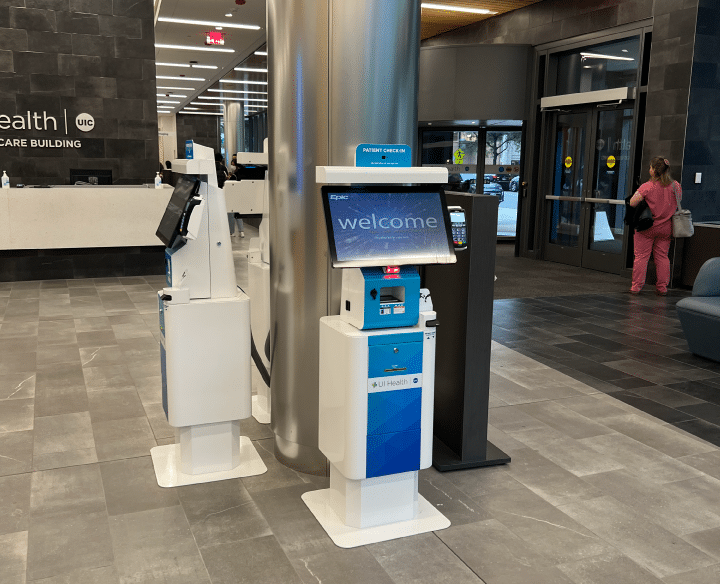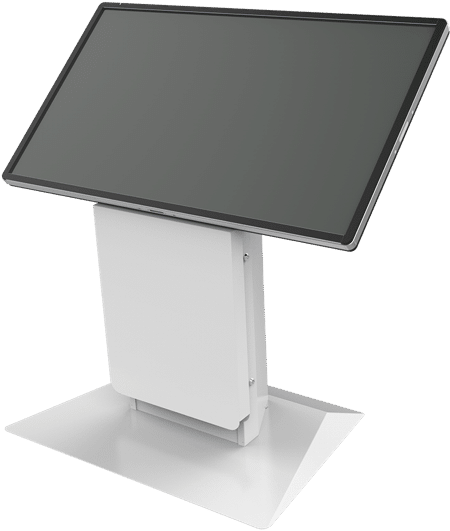Understanding and implementing the Americans with Disabilities Act (ADA) standards in self-service kiosks is an issue of growing importance. The rise of self-service technologies in numerous sectors such as retail, banking, healthcare, hospitality, and mass transit has provided customers with convenience and autonomy. However, it’s vital that these advances in technology are made accessible to all users, including those with disabilities. Proper adherence to ADA guidelines ensures that self-service kiosks are not a barrier but an advantage for individuals with disabilities.
Olea Kiosks has extensive expertise in building ADA-compliant kiosks. Many of the universal kiosk designs are fully ADA-compliant. And Olea has vast experience in building custom kiosk solutions to serve both impaired and non-impaired users.
The aim of the ADA regulations pertaining to kiosks is to facilitate equal access and usage for individuals with physical disabilities, including those with mobility challenges, hearing, and vision impairments, parallel to those without such impairments. This inclusivity extends beyond the kiosk unit itself, including the touchscreen, the peripheral devices, and even the vicinity around the kiosk.
Considerations for Making Kiosks Accessible
When incorporating accessibility into kiosks, it’s important to consider both physical design and user interface design.
Physical Design Considerations:
- Are all kiosk controls tactilely distinguishable? For example, can a user identify the audio headphone jack by touch or by a tactile symbol?
- Do all controls have braille or large print labels? For example, it might be important to label special function keys or controls that are not standard on a traditional keyboard.
- Is the height of the screen and various controls appropriate for wheelchair and standing users?
- Is there sufficient clearance around the kiosk for users with assistive mobility devices? Individuals in a wheelchair, scooter, or using another mobility device may need additional space to approach or leave the machine.
Olea designs and produces kiosks for two types of ADA compliance: the 2010 ADA Standards for Accessible Design and the ADA 508, which is a requirement if your company is purchasing and deploying a kiosk for the government or are using federal government funds. Please note, standard ADA compliance requires that any item the user needs to make the kiosk function be no higher than 48 inches off the ground. This applies to a touch screen and any other components, such as card readers or telephone handsets.
The first step to ensure ADA compliance is to evaluate how the kiosk is to be deployed. The ADA specifications state that there must be clear access to the kiosk, either front-access or side-access, for users with mobility limitations. The law requires ground clearance of at least 30 inches by 48 inches for both front access and side access.
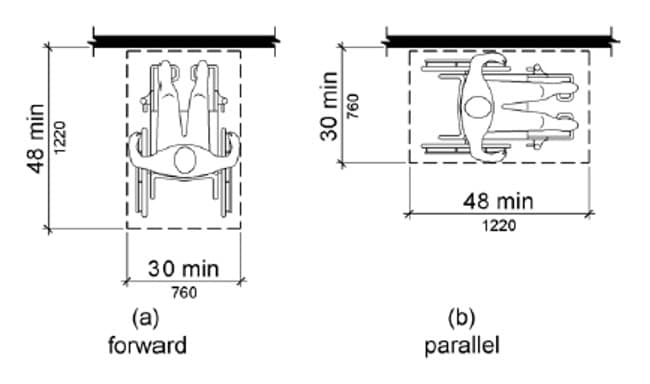
In addition, the kiosk itself must provide an equivalent user experience for impaired users and non-impaired users. As a result, both standing and seated users must have the ability to reach the entire touch screen and easily interact with the necessary components, such as a keypad, keyboard, and card reader. The ADA specifications include:
For unobstructed front-reach access, the interactive controls of the kiosk (i.e. touch screen and other necessary controls) must be at least 15 inches, but no more than 48 inches above the floor.
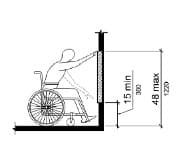
For kiosks with obstructed front-reach access, the interactive controls of the kiosk can be set back anywhere from zero to 20 inches when the maximum height of the controls is 48 inches. If the maximum height is less than 44 inches, the controls can be set back a maximum of 25 inches.
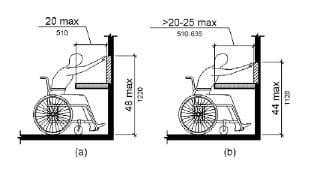
For a unit that is designed for side-reach unobstructed access, the user controls can have a maximum height of 48 inches above the floor with a minimum placement at least 15 inches above the floor. These specs also apply to small obstructions up to 10 inches in width.
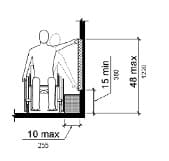
For side-reach access with an obstruction, the controls can be set back from zero to 10 inches when the height of the controls is a maximum of 48 inches. The height of the obstruction can be no more than 34 inches. The controls can be set back up to 24 inches if the maximum height is no more than 46 inches.
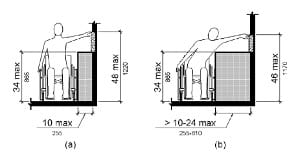
Interface Design
- What kind of controls are necessary to use the interface? Should a mouse, trackball, or touchpad device be present if a pointer is needed to use the interface?
- Can the visual presentation of the interface be customized? The question here is whether someone with a visual impairment can zoom in or out to change the size of the onscreen font or whether someone who is colorblind can determine the functionality of controls by a method other than color alone.
- Does the interface provide speech output? Can headphones be inserted into the jack, and will that activate text-to-speech functionality? Is there a braille sign to clearly communicate to a user how to activate the text-to-speech functionality?
- Does the interface reset to a standard configuration after each use? The interface should always return to a default state after each user completes their tasks.
Selecting the correct input device is part of the Interface design for kiosk accessibility. Olea has experience with all of the solutions mentions above as well as the commonly used input devices by Storm Interface that provide arrow keys and a headphone jack for text-to-speech.
Storm Assistive Technology Products are audio-enabled, tactile, information-navigation devices designed for use as part of a ‘text-to-speech’ or ‘audible content navigation’ system. These devices are designed to provide an accessible hardware interface for touchscreen applications.
Hardware and software must work seamlessly to create a user experience that is accessible across the spectrum of disability needs.
JAWS®(Job Access with Speech) screen reader adds text to speech audio output to your kiosk. With JAWS® and supported devices like the STORM products, you can attain your accessibility goals.
Whether you’re looking to deploy kiosks in a healthcare facility, at an amusement park for tickets or food ordering, or for border control, Olea has extensive expertise in building ADA-compliant kiosks that not only meet the ADA standards but are also thoroughly tested to ensure that the kiosk can be effectively used by both impaired and non-impaired users. Contact Olea today to find out how we can create a stellar ADA-compliant kiosk for your organization.
Resources
The following resources contain important information detailing accessibility guidelines:
Web Content Accessibility Guidelines (WCAG) 2.1 –for HTML or web-based interface.
Section 508 standards from the US government–interface development standards that may apply to government-related kiosk machines.
Americans with Disabilities Act (ADA) — standards for physical design considerations.

